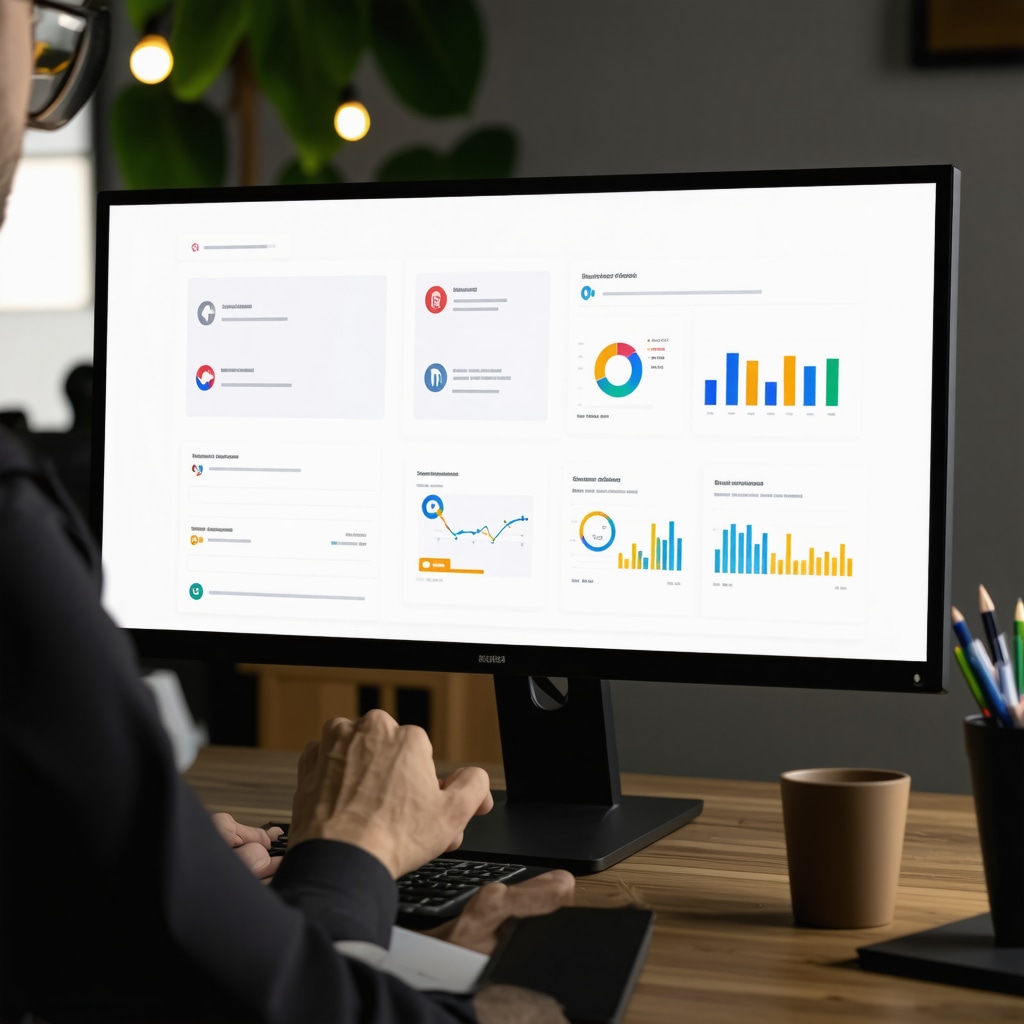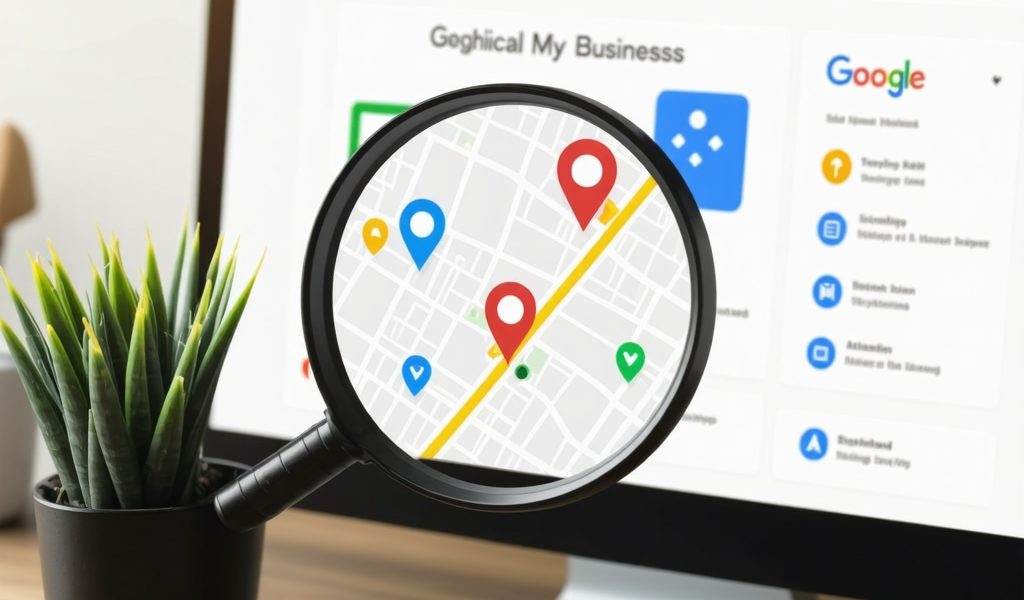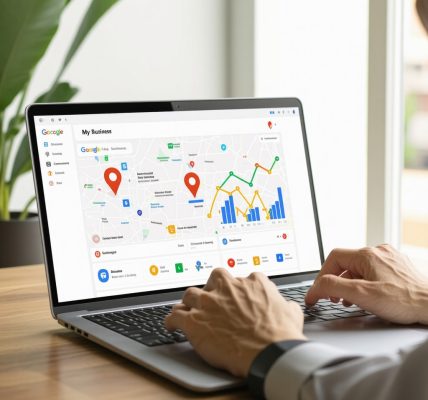Is Your Google My Business Playing Hard to Get? Time for a Technical Audit!
Ever feel like your local SEO efforts are shouting into the void? You’re not alone. In a world where local searches are soaring—think about how almost every business now competes for those coveted spots on Google Maps—standing out requires more than just a pretty profile. It demands a meticulous, strategic GMB technical audit. But don’t fret; I’ll guide you through the essentials like a seasoned columnist with a sharp eye for the nuances that can make or break your local visibility.
Why Bother with a GMB Technical Audit? Because Every Detail Counts!
If you think about it, your Google Business Profile is the digital storefront of your local empire. Miss a tiny detail, and you risk losing out on crucial local traffic. Think of it as cleaning your glasses—suddenly, everything becomes crystal clear. From verifying your NAP consistency to optimizing your categories, each step in the audit process acts like a secret weapon in your local SEO arsenal.
Is Your GMB Profile Fully Loaded? Let’s Check!
Are You Overlooking the Basics That Could Boost Your Rankings?
First, ensure your NAP (Name, Address, Phone Number) details are consistent across all platforms. This simple step is often underestimated but plays a vital role in local SEO. Next, verify your profile’s categories—are you using the most relevant ones? Remember, Google favors specificity over generality. Furthermore, your business hours, services, and description should be up-to-date, engaging, and keyword-rich without sounding spammy.
And speaking of keywords, don’t forget to embed local keywords naturally. For example, instead of just saying “best pizza,” say “top pizza joint in Downtown Chicago.” It’s about precision and relevance, not stuffing keywords like a turkey at Thanksgiving.
Getting Technical: The Hidden Gems of GMB Optimization
Ever wondered if your Google Maps listing is technically sound? This is where technical SEO for GMB comes into play. Check your website’s schema markup to include local business details. Also, ensure your website loads swiftly and is mobile-friendly—Google’s love for speed and mobile responsiveness is no secret. Consider auditing your backlink profile and citations—these are the backbone of a credible local presence.
For a comprehensive check, I recommend diving into tools like Moz Local or BrightLocal—they’re practically the Swiss Army knives of local SEO. And if you’re feeling overwhelmed, professional GMB citation services can help you gain that competitive edge. Remember, local SEO is not a sprint; it’s a marathon, and a detailed audit is your secret weapon to stay ahead of the pack.
Why Do Some Local Businesses Still Struggle with Visibility?
Is it because they overlook the smallest details? Or perhaps they’re not leveraging the power of reviews and ongoing content updates? Whatever the reason, the good news is that a thorough GMB technical audit can uncover hidden issues and opportunities. As Google continues to evolve, staying on top of these technical nuances ensures your business remains a local hero, not just another face in the crowd.
So, are you ready to take your local SEO to the next level? Dive into your GMB audit today, and don’t forget to share your experiences or ask questions in the comments. Remember, in the world of local SEO, knowledge is power—unlock it!
For more expert insights, check out this comprehensive guide.
Are You Missing the Hidden Technical Gaps in Your GMB Profile?
If your local SEO efforts aren’t yielding the desired results, it might be time to look under the hood of your Google My Business profile. A comprehensive technical audit is essential to uncover hidden issues that could be sabotaging your visibility. From schema markup to backlink profiles, every detail matters in the intricate world of local SEO.
Deep Dive into GMB Technical Audit: Beyond the Basics
While verifying your NAP consistency and choosing the right categories are fundamental, advanced technical aspects can significantly influence your ranking. For instance, check if your website’s schema markup correctly reflects your local business information. Proper schema implementation enhances Google’s understanding of your business context, improving your chances of ranking higher in local packs. Additionally, examining your website’s loading speed and mobile responsiveness ensures you meet Google’s core ranking factors.
Did you know that a well-optimized backlink profile and accurate citations serve as trust signals to Google? Failing to audit these can leave your profile vulnerable to negative SEO or inconsistent information across directories. Tools like Moz Local or BrightLocal are invaluable for maintaining citation consistency and monitoring your backlink health, ensuring your local presence remains authoritative.
What Are the Overlooked Technical Elements That Could Boost Your GMB Ranking?
One often-overlooked aspect is the integration of Google Maps API with your website. Proper integration not only improves user experience but also signals to Google that your business is active and engaged locally. Moreover, consistent use of local keywords in your website’s meta tags, headers, and content can reinforce your relevance for specific geographic queries.
Furthermore, regularly updating your GMB profile with fresh posts, photos, and offers keeps your listing active and engaging—Google favors active profiles. Implementing structured data markup for reviews and events can also enhance your visibility, making your profile stand out in search results.
What Would an Expert Say About the Most Critical Technical GMB Optimization Tactics?
Experts emphasize that a strategic approach to technical SEO for GMB can dramatically elevate your local rankings. As Search Engine Land highlights, optimizing local citations, managing reviews effectively, and ensuring your website’s technical health are key pillars of a successful local SEO strategy (Search Engine Land). These efforts, combined with ongoing monitoring, create a resilient foundation for sustained visibility.
Remember, a meticulous GMB technical audit isn’t a one-and-done task. Regularly revisiting your profile and website ensures you stay ahead of algorithm updates and local competition. Want to dive deeper? Explore this in-depth guide for more expert tips on mastering GMB optimization.
Have you conducted a recent GMB technical audit? Share your experiences or ask questions below—sometimes, a fresh perspective can reveal overlooked opportunities. And if you found this article helpful, consider sharing it with fellow local business owners striving for top local rankings!
Unveiling the Hidden Technical Gaps in Your GMB Profile That Could Be Costing You Top Rankings
While most local businesses focus on updating their profile information and gathering reviews, a deeper dive into the technical underpinnings often reveals overlooked opportunities. Technical SEO nuances, such as structured data implementation, website schema accuracy, and crawlability, form the backbone of your Google My Business (GMB) success. Addressing these elements with expert precision can propel your local visibility to new heights.
The Critical Role of Schema Markup in Local SEO Amplification
Implementing precise schema markup is no longer optional; it’s a core pillar of local SEO mastery. Schema acts as a translator, helping search engines interpret your business details with clarity. For instance, LocalBusiness schema should include your full address, opening hours, contact details, and service categories. When correctly embedded, schema enhances your profile’s appearance in Rich Results, such as star ratings and service highlights, making your listing irresistibly clickable.

Beyond Basics: Auditing Your Website’s Technical Health for Local SEO
Google’s algorithms prioritize fast-loading, mobile-responsive websites that provide a seamless user experience. Conducting a comprehensive technical audit involves tools like Google Search Console, GTmetrix, and Lighthouse. These tools reveal critical issues such as page load delays, mobile usability errors, or indexing problems that impede your GMB visibility. Remember, a slow, unoptimized website can sabotage even the most meticulously crafted GMB profile.
Deepening Your Link Profile and Citation Strategy—The Unsung Heroes of Local Authority
Authority signals like backlinks and consistent citations strengthen your local SEO foundation. However, not all links are created equal. Focus on acquiring high-quality, relevant backlinks from local directories, industry associations, and community partners. Regularly audit your citation profiles with tools like BrightLocal to identify and rectify inconsistencies, duplicate entries, or outdated listings. These efforts ensure your NAP information remains synchronized and credible in the eyes of Google.
How Does Google’s Map API Integration Impact Your Local SEO Strategy?
Integrating Google Maps API with your website isn’t just about user experience; it’s a subtle yet powerful signal of local engagement. Proper API integration ensures your business location displays correctly across platforms and enhances your site’s credibility in Google’s algorithm. It also enables you to embed interactive maps and localized content that boost user interaction and dwell time—factors that indirectly influence rankings.
What Are the Nuanced Benefits of Regular Technical Audits for GMB Optimization?
Ongoing audits help you stay ahead of algorithm updates and competitive shifts. They reveal emerging issues like schema deprecations, citation inconsistencies, or website technical flaws that can erode your rankings over time. Moreover, they facilitate proactive content updates, review management, and profile engagement—elements Google rewards with higher visibility. Maintaining a dynamic, technically sound GMB profile ensures your business remains a local leader rather than a forgotten contender.
Are you ready to elevate your local SEO game through meticulous technical optimization? Dive into regular audits, harness authoritative tools, and stay informed about the latest Google algorithm nuances. Your next breakthrough could hinge on a technical tweak that unlocks a flood of local traffic.
For an in-depth exploration of advanced GMB strategies, explore this comprehensive guide. Share your technical challenges or success stories in the comments—your insights could help others climb the local SEO ladder!
How Can Technical Schema Markup Elevate Your Google My Business Profile to Elite Status?
Implementing precise schema markup isn’t just a technical formality; it’s a pivotal element that can significantly amplify your local search visibility. By embedding detailed LocalBusiness schema, including your operating hours, service categories, and contact information, you enable Google to interpret your profile with unparalleled clarity. This clarity often manifests in Rich Results—star ratings, service highlights, and more—that make your listing irresistibly clickable and stand out in competitive local packs. According to Moz’s local SEO guide, schema markup is among the top factors influencing local rankings (Moz, 2018), underscoring its importance in advanced optimization.
What Are the Hidden Technical Gaps in Your Website’s Architecture That Could Sabotage Your GMB Performance?
Beyond optimizing your GMB profile, your website’s technical health plays a silent yet powerful role in local SEO rankings. Issues like improper crawl budget management, duplicate content, or unoptimized mobile elements can hinder Google’s ability to crawl and index your site effectively. Conducting a thorough audit using tools such as Google Search Console, Screaming Frog, or Ahrefs can illuminate these issues. For example, fixing crawl errors and implementing hreflang tags where appropriate ensures your site’s architecture supports your local SEO efforts rather than obstructs them. Remember, Google prioritizes fast, mobile-friendly sites; neglecting these fundamentals can undermine even the most meticulously crafted GMB profile.

How Do Structured Data and Review Management Interact to Boost Your Local Authority?
Structured data not only clarifies your business details but also enhances your review presentation, transforming ordinary star ratings into compelling Rich Snippets. Properly implementing review schema can display aggregate ratings directly in search results, increasing click-through rates. Moreover, actively managing reviews and responding to customer feedback demonstrates engagement and trustworthiness—factors that Google considers vital. As BrightLocal emphasizes, review signals are among the most influential local ranking factors today (BrightLocal, 2024). Integrating review management with schema markup creates a synergistic effect, elevating your local authority and visibility in a crowded marketplace.
What Advanced Tools and Metrics Should You Use to Monitor and Fine-Tune Your GMB Optimization Efforts?
Staying ahead in local SEO requires continuous monitoring of your GMB profile and website performance. Tools like SEMrush’s Listing Management, Whitespark’s Local Citation Finder, and Google’s own GMB Insights provide granular data on your profile’s visibility, customer engagement, and review trends. Tracking metrics such as profile views, search queries, and customer actions can help you identify areas for improvement. Regularly analyzing this data allows for data-driven adjustments—whether optimizing new keywords, updating photos, or refining your review strategies—ensuring your local SEO efforts remain agile and effective. As Search Engine Land advocates, ongoing measurement is the cornerstone of long-term success in local search dominance (Search Engine Land).
Expert Insights & Advanced Considerations
1. Schema Markup as a Local SEO Catalyst
Implementing precise schema markup is no longer optional; it’s a core pillar of local SEO mastery. Schema acts as a translator, helping search engines interpret your business details with clarity. For instance, LocalBusiness schema should include your full address, opening hours, contact details, and service categories. When correctly embedded, schema enhances your profile’s appearance in Rich Results, such as star ratings and service highlights, making your listing irresistibly clickable.
2. Website Technical Health as a Ranking Foundation
Google’s algorithms prioritize fast-loading, mobile-responsive websites that provide a seamless user experience. Conducting a comprehensive technical audit involves tools like Google Search Console, GTmetrix, and Lighthouse. These tools reveal critical issues such as page load delays, mobile usability errors, or indexing problems that impede your GMB visibility. Remember, a slow, unoptimized website can sabotage even the most meticulously crafted GMB profile.
3. Link Profile & Citation Authority
Authority signals like backlinks and consistent citations strengthen your local SEO foundation. Focus on acquiring high-quality, relevant backlinks from local directories, industry associations, and community partners. Regularly audit your citation profiles with tools like BrightLocal to identify and rectify inconsistencies, duplicate entries, or outdated listings. These efforts ensure your NAP information remains synchronized and credible in the eyes of Google.
4. Google Maps API Integration
Integrating Google Maps API with your website isn’t just about user experience; it’s a subtle yet powerful signal of local engagement. Proper API integration ensures your business location displays correctly across platforms and enhances your site’s credibility in Google’s algorithm. It also enables you to embed interactive maps and localized content that boost user interaction and dwell time—factors that indirectly influence rankings.
5. Continuous Monitoring & Regular Audits
Ongoing audits help you stay ahead of algorithm updates and competitive shifts. They reveal emerging issues like schema deprecations, citation inconsistencies, or website technical flaws that can erode your rankings over time. Moreover, they facilitate proactive content updates, review management, and profile engagement—elements Google rewards with higher visibility. Maintaining a dynamic, technically sound GMB profile ensures your business remains a local leader rather than a forgotten contender.
Curated Expert Resources
- BrightLocal Blog: Offers in-depth guides on citation management and local SEO strategies.
- Google Search Central Blog: Provides official updates on Google’s algorithms and technical SEO best practices.
- Moz Local: An excellent tool for citation audits and local ranking insights.
- Screaming Frog SEO Spider: Essential for website crawling, identifying duplicate content, and technical issues.
- Schema.org: The definitive resource for implementing structured data markup correctly.
Final Expert Perspective
In the ever-evolving landscape of local SEO, mastering your Google My Business technical audit in 2025 is about precision, continuous learning, and strategic application. The key lies in integrating advanced schema markup, maintaining a technically flawless website, and leveraging authoritative signals like backlinks and citations. Remember, a well-optimized GMB profile combined with a technically sound website forms the backbone of dominant local search visibility. Dive deep into these expert strategies, stay vigilant with regular audits, and always be ready to adapt to the next Google update. Your local business’s success depends on it. Ready to elevate your local SEO game? Explore these resources, implement these insights, and share your journey—your expertise can inspire the community to reach new heights.



